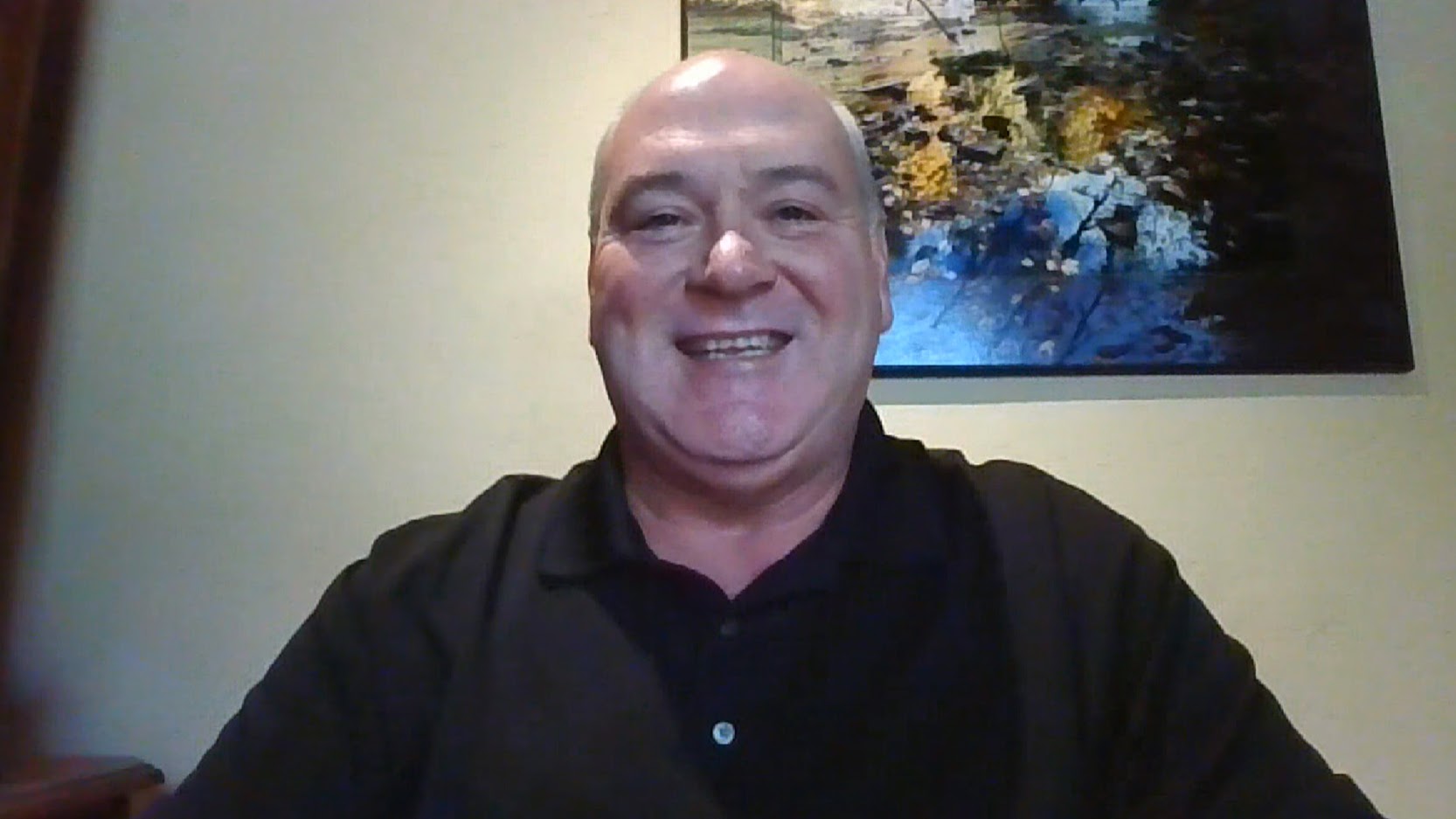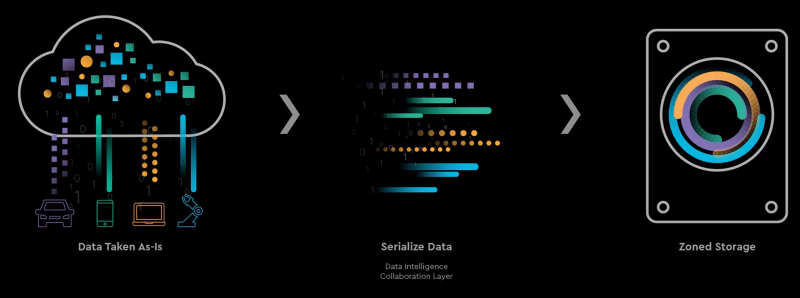 INFRA
INFRA
 INFRA
INFRA
 INFRA
INFRA
It no longer matters your reason for going digital, whether it’s an inspired initiative from the C-suite or the operational pivot catalyzed by a global pandemic. The digital transformation has transcended contemplation — it’s time to jump right in.
This era is defined by a business’ ability to leverage data to drive value versus cost. But when it comes to investing in data management’s capacity, performance and access, the infrastructure still matters.
“Here at Western Digital we have such a unique perch in the industry to see all the dynamics in the [original equipment manufacturing] space and across the hyperscale space … really global economies about this growth of data,” said Phil Bullinger (pictured), senior vice president and general manager for data center business at Western Digital Corp.
Having worked at EMC, Oracle Corp. and LSI Corp., Bullinger is familiar with big-data projects. Now at Western Digital for over three years, the pressure is on to move the needle by more than a few digits as the world is relentlessly consuming data. For Western Digital’s drive process, what was once measured in exabytes is now docked in zettabytes, with a 60% increase compared to the 12 months prior, according to Bullinger. For perspective, a zettabyte is equivalent to 1 trillion gigabytes.
Acknowledging COVID-19 as both an accelerant in some areas of growth for digital transformations and a headwind in other areas, Bullinger has witnessed firsthand the pandemic’s impact on continued demand for enterprises’ “need to store, access and take advantage of data.”
Speaking with Jeff Frick, host of theCUBE, SiliconANGLE Media’s livestreaming studio, Bullinger discussed how a fresh perspective on zoned storage can facilitate digital transformations. They also spoke about the importance of establishing industry standards for the revamped technology as big data forces an evolution in storage interfaces. (* Disclosure below.)
While the advent of hyperscale computing has ushered in a voracious consumption model readily monetized by the major public cloud platforms, the mechanisms for how data is stored and how data centers communicate with storage haven’t changed much, according to Bullinger.
“We’ve seen advances in storage capacities … and, similarly, on the [solid state drive] side we’re dealing with capacities of seven and 15 and 30 terabytes. Things have gotten larger, as you’d expect. Some interfaces have improved — think [non volatile memory express] … with low latency, and NAND flash to take advantage of the inherent performance of transistor-based persistent storage. But really when you think about it, it hasn’t changed a lot,” Bullinger said.
“What has changed is workloads,” he furthered, noting the last decade’s evolution in workloads that are sequential in nature, with consistent lifecycles being able to write in big chunks and read in smaller pieces. This creates a problem because the systems interacting with storage hold paradigms that are decades old, hailing from the hard drive industry.
To this end, Western Digital has invested heavily in its solid state drives. Now accounting for a substantial percentage of the company’s revenue, Q1 2021 SSD sales are up by 9% sequentially at $2.2 billion, which is 49% higher year-over-year. Meanwhile, sales from hard drives are down by 3% sequentially at $2.1 billion, which is 4% lower year-over-year.
Most recently the company released the My Passport SSD, which is powered by non-volatile memory express technology designed to rapidly transfer data to and from SSDs. The palm-sized device is hailed by Western Digital as an improvement over older hard drive disk-related interfaces.
“The reality is, when we talk about SSDs, structure really matters,” Bullinger said. “Workloads are driving very, very fresh looks at how more intelligence can be applied to application operating systems and storage device interfaces to drive much greater efficiency.”
Zoned storage offers a fresh perspective for Western Digital’s storage journey, counterintuitive as it may seem given the trend toward data atomization in the rest of the data center, crafting smaller and smaller units for disassembly and reassembly in different quantities as needed. With zoned storage, data is maintained in large chunks.
“It’s maybe not intuitive in terms of why zoning actually creates a more efficient storage paradigm,” Bullinger said. “This is really where the intersection of structure and workload and the nature of data all come together.”
Looking back at solid state module hard drives, the industry took advantage of the fact that the right head on a hard disk drive is much smaller, Bullinger explained. This notion of shingling on the drive can increase area density significantly, facilitating the emergence of zoned storage. What’s new now is the SSD.
“We have the Zoned Namespaces (ZNS) specification where you divide up the namespace of an SSD into fixed-size zones written sequentially. But now those zones are intimately tied to the underlying architecture of the NAND itself — the dies, the planes, the read pages, the erase pages — so that in treating data as a block, you’re eliminating a lot of the complexity. With the work an SSD has to do to emulate a legacy hard drive, you’re increasing performance and endurance,” Bullinger stated.
The ZNS technology for Western Digital’s SSD holds potential for the company thanks to its simplified structure and reduction of over-provisioning by as much as 10 times, according to Bullinger. This is seemingly an improvement on Western Digital’s HDD shingled magnetic recording component, which derives its value in providing additional capacity by overlapping (shingling) data on the drive.
“In the SSD side of things for ZNS, it actually opens up even more value proposition for the customer because SSDs have to emulate hard drives,” Bullinger said.
The goal is to maintain the perks of HDDs while layering on the benefits of zoned storage. For Western Digital, that means eliminating complexities surrounding garbage collection and write amplification, which can reduce the endurance of the device, Bullinger explained. For example, a typical SSD would need over-provisioning by as much as 20 times or more additional NAND bits, the commonly used type of flash memory in SSDs, just to allow for the extra working space to manage the deletion of data. It all requires a great deal of reading and writing of data to keep things tidy, which adds a layer of complexity.
“ZNS, by mapping the zone size with the physical structure of the SSD, eliminates garbage collection,” Bullinger stated. This is crucial for enterprise-grade SSDs that typically incorporate dynamic random-access memory, as ZNS aims to simplify DRAM’s data management dynamics through a streamlined structure and reduces the amount of DRAM by as much as 8x, according to Bullinger.

The forward-looking expectation for zoned storage has become a focal point for Western Digital as the world is projected to generate upwards of 100 zettabytes per year, according to research group IDC. Given the sequential nature of much of this data, which will comprise artificial-intelligence and machine-learning data, as well as video, edge device and surveillance data, Western Digital has identified the opportunity to apply its zoning techniques to create larger chunks when organizing workloads.
It’s an industry shift that could bode well for Western Digital, prompting its launch of the Zoned Storage initiative last year. The open-source, standards-based initiative looks to enable an ecosystem supporting Western Digital’s methods of storing and retrieving data across its HDD and SSD portfolio, which leverage SMR and ZNS technologies, respectively.
Being an extension of the NVMe standard, ZNS sets up Western Digital’s SSDs to better emulate HDDs so that regardless of the storage method it can be treated as one technology. In establishing industry standards, Western Digital looks to position itself to better enable customers’ investments in storage.
“Now that we have the NVME working group, we’ve got a similar … situation where we’ve got SMR standards that have been approved for some time, and the [Serial AT Attachment interface] and [the Small Computer System Interface] standards,” Bullinger said.
The benefit of this is that a customer going through a lift and shift to adapt an application file system, operating system or ecosystem to zoned storage will have seamless integrations between their HDD and SSD products, according to Bullinger. “It’s not an incremental investment,” he said.
The home for all this open-source work is zonedstorage.io, where companies can contribute open-source tools, code, validation environment and documentation.
“It’s not a marketeering website. It’s really a website built to land actual open-source content that companies can and use and leverage and contribute to accelerate the engineering work to adapt software stacks to zoned storage devices and to share those things,” Bullinger concluded.
Watch the complete video interview below, and be sure to check out more of SiliconANGLE’s and theCUBE’s CUBE Conversations. (* Disclosure: Western Digital Corp. sponsored this segment of theCUBE. Neither Western Digital nor other sponsors have editorial control over content on theCUBE or SiliconANGLE.)
Support our mission to keep content open and free by engaging with theCUBE community. Join theCUBE’s Alumni Trust Network, where technology leaders connect, share intelligence and create opportunities.
Founded by tech visionaries John Furrier and Dave Vellante, SiliconANGLE Media has built a dynamic ecosystem of industry-leading digital media brands that reach 15+ million elite tech professionals. Our new proprietary theCUBE AI Video Cloud is breaking ground in audience interaction, leveraging theCUBEai.com neural network to help technology companies make data-driven decisions and stay at the forefront of industry conversations.